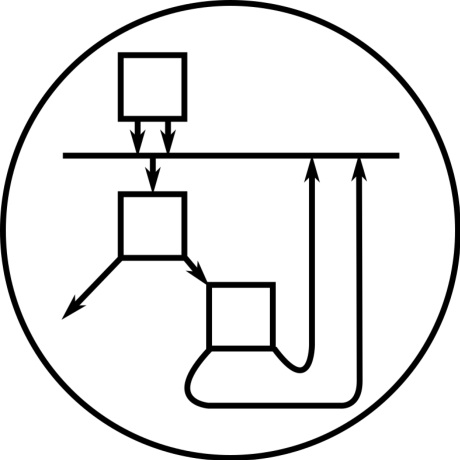
xcb-shim
Intermediate form of XCB protocol specification data structures, to make it easier to build native bindings rather than wrapping libxcb
OTHER License
xcb-shim: easier native X11 protocol implementation
This program produces an intermediate form of the XCB protocol specification data
structures, to make it easier to build native bindings rather than wrapping libxcb.
The XML files in the xcbproto repository specify most of the necessary data
types and (de)serialization procedures for working with X11, but they require a reasonable
amount of interpretation before they can be used. The xcbgen Python library
performs a big chunk of this interpretation.
Reimplementing this complex (and not documented outside of the python code?) logic in other
programming languages is a big obstacle to writing X11 bindings using the XCB specifications.
Therefore, I wrote xcb-shim.py to reduce the burden on programmers trying to
do this. The program uses xcbgen to do all the complex stuff and emits a JSON
structure containing more of the information needed to compute data type definitions and
(de)serialization code than you'd get from reading the XCB XML files alone. For convenience, it
also pulls in keysym definitions from
`keysymdef.h.
A Preserves Schema describing the output of
xcb-shim.py is available in xcb.prs.
Versioning
The program and its output are versioned together in two parts: a semver
part, covering xcb-shim.py and the schema of the data structure it produces, and a part
repeating the version of xcbproto that it got the input XML files and the xcbgen library
from.
For example, version 1.2.3+1.15 means that xcb-shim (and the schema governing xcb.json)
is at version 1.2.3 and the XML files and xcbgen library used to produce xcb.json were from
xcbproto version 1.15.
Open questions
union types. The method for deciding which union member is active is not specified, and
varies from use to use. Fortunately, there are only a few unions in the current protocol suite.
A future improvement could be to come up with some way to specify the connection between the
discriminator and the union.
Current uses:
-
randr:NotifyData: member is selected bysubCodemember of the containingNotifyevent, whose values are specified to be drawn from enumNotify. -
xkb:Behavior: member is selected bytypefield of each member, carefully positioned to be in the same place in each, with an unspecified, implicit connection to an enumBehaviorTypewhich connectsCARD8values to the active member ofxkb:Behavior. -
xkb:Action: likexkb:Behavior, but the connection to the enumSATypeis specified by anenumattribute on thetypefields in each member. -
ClientMessageData: member is selected byformatfield, able to take on values as documented in the XML comments but not specified in the actual structures.
mask attribute on field XML elements. The xcbgen code doesn't yet propagate this
information to the resulting Field objects. This makes bitmask values appear as simple
integers. Perhaps xcbgen could be enhanced to capture this information. Similarly, xcbgen
doesn't propagate altenum or altmask.
string_len in QueryTextExtents. The odd_length field refers to string_len, but that
is not explicitly defined. The xcbgen code autogenerates listname_len if it's not
present; there's a strong convention that listname_len be used to describe the length of
a list!
Use of implicit length in replies. In some definitions (e.g. keysyms_per_keycode in
GetKeyboardMapping reply, data in GetImage reply, and many others in various extensions),
a list's length expression references a length field that is not part of the explicit list of
fields in the definition. It is a field automatically added to replies by xcbgen with flags
{wire, auto}, but not visible, so while it's not part of the interface to the structure,
it is supposed to be present for the internal serialization code.
Other implementations generating code from xcbproto XML files
I'm aware of libxcb, plus a Go binding, xgb (previously
here), but I don't know of any others. There must be some!
Please let me know if
you know of any!
Licence
See COPYING for licencing information for all the files in this repository with
the exception of the build product, xcb.json. The xcb.json file is
essentially a derived work of the input XML files, so presumably falls under the
licence(s) of the input files themselves. I'm no lawyer, and I'm not sure how the licencing
works for compilers like xcb-shim.py.